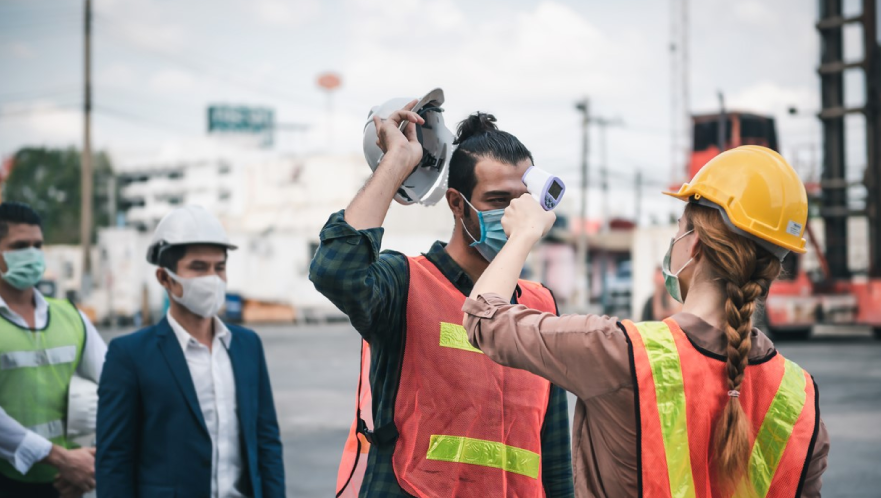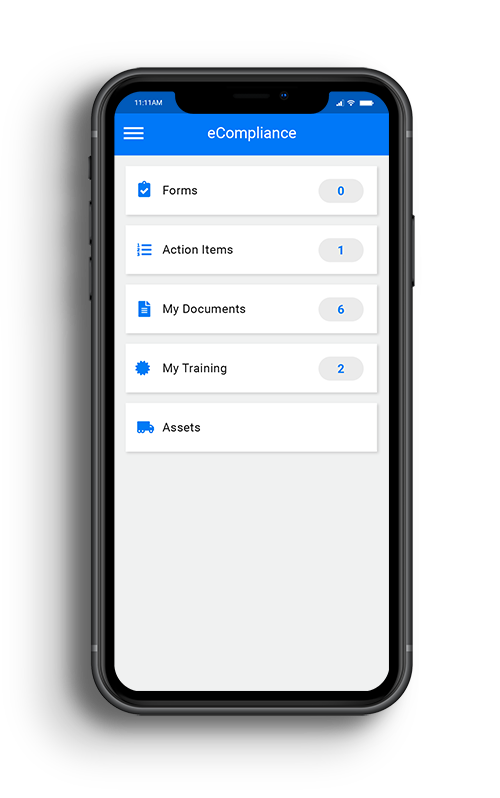
Share this Post
PUBLISHED
August 27, 2020
WRITTEN BY
Dina Adlouni
There’s no time like the present to build your team up for success to achieve total worker safety. As Safety Nerds, we know keeping your workforce safe is top of mind for all safety champions, but what does it entail? With many things to focus on during this pandemic, we know it can be easy to get lost in the details. We wanted to highlight key factors you should not let slip through the cracks.
Total Worker Safety previously entailed the fundamental aspects of physical safety, however now, safety champions are expanding this idea to include broader concepts such as physical and mental health as well as overall well-being (in and out of the workplace). Time to elevate how your organization views and operationalizes health and safety to protect your most valuable assets: your team members.
1. Physical Safety
To build your team up for success, physical safety is first and foremost as it is the fundamental aspect of safety.
COVID-19 has allowed EHS professionals to strengthen the core tasks and duties carried out by their team. Many are revaluating all the steps and factors which go into specific job duties to see where someone can contract the coronavirus, and then making all the changes necessary to reduce these touchpoints. By getting into the specifics and logistics of each role, you will be able to better protect your team.
As safety champions redefine safety, many are now also acknowledging risk factors, both related and unrelated to work to protect their workforce. For instance, many are paying attention to what workers are doing while they are off-site. Who are their team members interacting with? How often? Have they been exposed to the coronavirus or to anyone who has been exposed? Are they practicing social distancing? Are they using masks? All these factors have a direct impact on your workforce, so it is vital to focus on these critical elements to ensure success.
2. Physical Health
Physical health is another essential point of focus as we move beyond the fundamentals. Not only should you look at all the necessary steps of a specific role; you should also look for ways to reduce any risk of exposure while workers are on-site. Creating staggering schedules, implementing social distancing, reducing the number of team members who are on-site or in the office at one time, designating specific pathways or limiting the number of people to a common area, and providing face coverings or shields for your team are all vital to reduce the risk of exposure.
To find out more about what others are doing to protect their teams, check out crowd-sourced tips and tricks from our safety community. These safety best practices are sourced from North America’s greatest safety professionals – and now you can have their best practices with just a few clicks! We’d love for you to contribute your own great tactics that have been working for your team as well. Just add them in!
Making physical health a corporate responsibility is also important. This is not only done by reducing any risk of exposure at work, but by asking workers to share any notable pre-existing conditions they may suffer from. Those who may be identified as high risk may come in earlier than others, or they may work in areas without a large number of people around, for example. It’s vital we dedicate time to finding out more about the physical health of team members, to put our best foot forward at this time.
3. Mental Health and Overall Well-being
The entire world has suffered a great deal over the past few months. With the collective trauma we have all endured, our mental health has surely taken a hit. To restore a positive and optimistic mindset, keep these things in mind:
First, take care of yourself. As a safety leader, you must be the best you can be to give back to your team. If you are depleted and demotivated, your team will soon follow. Make sure to practice gratitude, focusing on the little things in your life you are thankful for to be a source of strength for your workforce to lean on.
Second, though you should be strong, it doesn’t mean you can’t let a sense of vulnerability shine through. Be open about any challenges you may be facing to let your team know they are not alone in feeling uncertain and unsure of what’s to come. When you are compassionate and speak from the heart, a sense of trust will be created – a key ingredient to building a strong safety culture.
Lastly, learn to see the signs of someone who may be struggling with mental health related issues. There are many creative ways you can communicate with your team to see who is engaged and who isn’t. For example, a fun daily trivia question can be sent to all employees and based on who is not interacting, you can gauge who may not be acclimating to the present situation very well. With all the anxiety surfacing from work, home, family circumstances, or the state of the world, it is important to focus on ways to alleviate these sources of stress to build your team up for success.
What it Comes Down to is…
Total Worker safety matters now more than ever. This approach seeks to improve overall well-being, ultimately allowing your entire team to be the best that it can be.
To learn more about the secret sauce that goes into building a strong safety culture, the safety mega trends that you need to be aware of to stay ahead of the curve, and how eCompliance’s cutting-edge technology has evolved to help manage these challenges due to COVID-19, check out the Association of Builders and Contractors Central Texas Webinar, where our CEO and Founder dives into these topics and more!
Learn How You Can Get eCompliance
Complete this form and one of our safety experts will be in touch.

